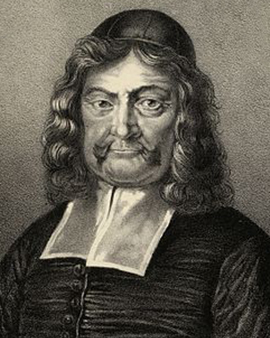The real Middle Ages have little of the general idea about glorious knights and beautiful princesses. Rather, society was divided into a hierarchy. The estates ranged from the clergy at the top to the nobility and at the bottom of the food chain were the peasants. They were enslaved and brought the nobility its wealth. Advancement between the estates was almost impossible. The division was seen as God-willed and therefore unchangeable. This is precisely what is exciting about the story of Georg Matthäus Vischer, a clergyman, topographer and engraver.
The life of the artist, who was born in 1628, seems as if it had sprung from the book. A success story with rapid rise from a farmer's boy to a respected artist, but also final fall down into the clutches of poverty. Born in the lowest class, probably no one would have believed him capable of his impressive career as a topographer and engraver. Especially after his unsuccessful attempt to teach as a clergyman. His original life plan was initially shattered with the premature termination of the Stamser monastery school, due to the economic hardship of his family, and the abandonment of the novitiate. Although he actually pursued the activity of a parish priest for a few years, his vocation was to work as a "freelance cartographer". His successful career as a topographer is a bit of a mystery, since no one knows exactly where and when he acquired the expertise, i.e. surveying and mapping knowledge. In general, his curriculum vitae could be uncovered only patchily and showed his life as very unsteady. The artworks from his hand have their strengths and weaknesses. On the one hand, he distorted landscapes and rivers or depicted them in the wrong perspective. On the other hand, he meticulously engraved buildings, such as castles or palaces, and paid great attention to detail. He was famous in his field mainly because he used the most modern surveying equipment and instruments and traveled all over the country. Moreover, he literally went down in history, as his engravings are today often the oldest preserved illustrations of Austrian topography. Thus, he still carries enormous relevance in modern times. He worked on behalf of the estates and in the service of the rulers. His first work was the so-called "Topographia Austriae superioris modernae". With the art he addressed both politics and military, as well as travelers.
The end of his life lost its spectacular splendor. Despite his success, the artist became increasingly impoverished and in the last year of his life even had to sell his books, materials and instruments that had brought him so much fame. In 1696 he died. His burial place, however, is unknown.
×





.jpg)
.jpg)
.jpg)
.jpg)
.jpg)
.jpg)
.jpg)
.jpg)
.jpg)
.jpg)
.jpg)
.jpg)
.jpg)
.jpg)
.jpg)
.jpg)
.jpg)
.jpg)
.jpg)
.jpg)
.jpg)
.jpg)
.jpg)
.jpg)
.jpg)
.jpg)
.jpg)
.jpg)
.jpg)
.jpg)
.jpg)
.jpg)
.jpg)
.jpg)
.jpg)
.jpg)
.jpg)
.jpg)
.jpg)
.jpg)
.jpg)
.jpg)
.jpg)
.jpg)
.jpg)
.jpg)
.jpg)
.jpg)
.jpg)
.jpg)
.jpg)
.jpg)
.jpg)
.jpg)






